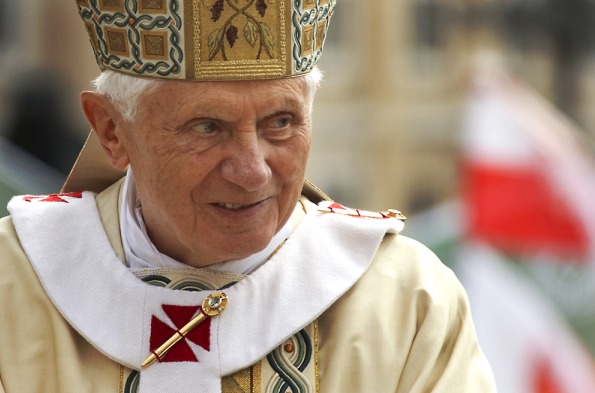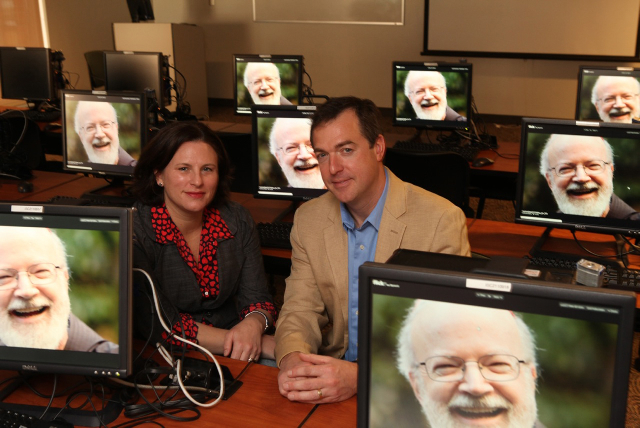Picking a Pope: Do Looks Matter?


Jennifer A. Stevens and Peter M. Vishton, both associate professors in the Department of Psychology at the College of William & Mary, contributed this article to LiveScience's Expert Voices: Op-Ed & Insights.
The process of choosing a new pope has a wide variety of dramatic elements: the sequestered conclave, the colored smoke, the new red shoes. Vatican “sources” and news outlets engage in frequent speculation on the front-runners — you can wager on the outcome at several European betting sites. But how much of this speculation is based on any real data?
Thinking about the face of the new pope is certainly an intriguing question. As psychological scientists, we started thinking that the faces of the cardinal candidates may provide important clues to who will be the next pope.
When we humans make decisions about others — including cardinals selecting a pope — we consider a wide range of information, such as experience, training and beliefs. But much research has suggested that the origins of those decisions are rooted in perceptual judgments based on the appearance of an individual’s face.
For instance, Alexander Todorov and his colleagues at Princeton University conducted a study based on facial images of candidates in congressional elections. The study participants rated the faces on qualities such as trustworthiness and competence. Participants had no knowledge of the candidates except for the face images, but their ratings enabled better-than-chance predictions of the election outcomes. The differences in ratings even lined up with the winning candidates' margins of victory. Nalini Ambady has found similar results in rating a professor's performance. Students' ratings of nonverbal behaviors — based on as little as six seconds of viewing time — strongly correlate with end-of-semester evaluations.
Could analysis of the faces of the papal candidates predict who the next pope will be? [6 Strange Facts About Choosing the Next Pope]
The selection of a pope is a decision based on detailed information by a group of experts. If the principles that seem to govern approval of politicians and professors also apply in the decisions of a conclave of highly educated, experienced, senior leaders, it seems to us that the power of a face to drive decisions is truly powerful.
Get the world’s most fascinating discoveries delivered straight to your inbox.
We collected pictures of 20 cardinals identified as leading candidates by several news sources and online betting sites. We showed photos of those leading contenders to 557 participants (327 male and 230 female recruited via Amazon Mechanical Turk). Of the participants, 137 self-identified as Christian; 237 self-identified as Hindu; 169 of the participants self-identified as being from North America; 337 self-identified as being from Asia.
The pictures were presented with no context or identifying information, such as name or country, for the candidates. We asked each participant to rate each of the 20 cardinals on four different traits: attractiveness, health, trustworthiness and likelihood to be selected as the next pope.
The top-ranked candidate for both attractiveness and trustworthiness was Cardinal Sean O’Malley, 69, of United States. The top-ranked candidate for health was Cardinal Luis Tagle, 56, of the Philippines. The top-ranked candidate for likelihood of selection was Cardinal Angelo Scola, 72, of Italy.
We also summed the ratings for all categories to obtain a composite evaluation. The overall top-ranked individual was O’Malley, followed by Cardinal Peter Erdo, 61, of Hungary; and Argentinian Cardinal Leonardo Sandri, 70. Erdo and Sandri did not win any particular category but scored consistently high in all four.
We’re not affiliated with the Vatican, and so we make no claim of infallibility. But our best guess is that O'Malley will be selected as the next pope. Our alternate picks are then Erdo and Sandri. If this were the Kentucky Derby, we’d pick O’Malley in a combination bet with Erdo and Sandri, but there’s no place or show at Vatican Downs.
If we are right, it will suggest that the appearance of the face plays a strong role, even in assessments like this one. If not, then perhaps a different type of decision-making is at work. For instance, if the cardinals are familiar with the personality, politics and contributions of the candidates, then the decision process becomes more complicated.
One of the most compelling characteristics of our results is the remarkable consistency within them. Hindu or Christian, male or female, North American or Asian — these characteristics didn't affect the results much. This consistency of results across a diverse set of participants underscores the immediate and automatic human process of evaluating a person based on how they look, even when the decision is based on an intrinsic characteristic like trustworthiness, or an extrinsic characteristic such as attractiveness. It’s a powerful process, even when the decision is selecting a person of power, such as the leader of the Roman Catholic Church.
The views expressed are those of the author and do not necessarily reflect the views of the publisher.



